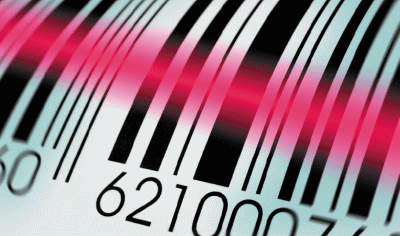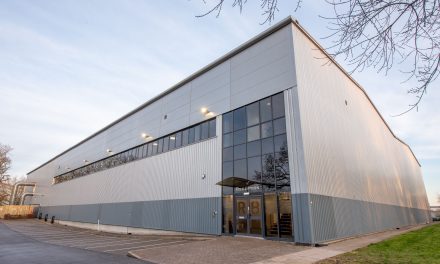 When you think about innovation in manufacturing, barcoding and labelling is not something that springs to mind. However, although this technology is over 30 years old, barcoding continues to play an essential role for manufacturers who want to improve their efficiency and streamline their processes and are also looking for new and innovative ways to use what some might say is an ‘old’ technology. Here, Sato International Europe’s European managing director Brian Lang, looks at the benefits of barcoding technology for the manufacturing industry
When you think about innovation in manufacturing, barcoding and labelling is not something that springs to mind. However, although this technology is over 30 years old, barcoding continues to play an essential role for manufacturers who want to improve their efficiency and streamline their processes and are also looking for new and innovative ways to use what some might say is an ‘old’ technology. Here, Sato International Europe’s European managing director Brian Lang, looks at the benefits of barcoding technology for the manufacturing industry
Over the past few years, barcodes have seen a fresh wave of popularity that stems largely from the introduction of Radio Frequency Identification (RFID). Both standard barcodes and RFID offer the ability to quickly and effectively assist manufacturers in managing their supply chain; however, although a barcoding system can work adequately in isolation, companies usually need to have established a working barcoding system before RFID is implemented as this technology in many cases has been designed to enhance and supplement – not replace – barcodes.
This aspect, coupled with the considerably higher cost of both the initial RFID implementation and the ongoing higher cost of the RFID labels and printers required (compared with standard barcode technology), means many manufacturers have, especially small to medium sized businesses, been reluctant to fully embrace RFID.
The impact that the economic downturn has had on the UK manufacturing industry is also something that should be taken into account when analysing the reasons for the resurgence in investment in barcoding technology. Historically, a key driver for the use of barcodes has always been compliance, where regulatory bodies have asked that barcode labels are used due to the fact that you can embed large amounts of data such as life-cycle, component and manufacturer information into a single barcode label. However, now many manufacturers are choosing to implement barcoding systems because the opportunities to improve processes, supply chain efficiency and cut costs are becoming more apparent, and ever more critical in the current economic environment.
 Printer manufacturers have also seen this, and the development of smart printing technology has introduced a raft of benefits to end-users, including improved productivity, greater accuracy in goods identification and substantial cost reductions. One of the major facilitators of these benefits is the way smart printing is able to consolidate much of a company’s IT infrastructure; centralising many of its key printing processes within the printing device itself. The earliest iterations of the smart printing concept were developed over a decade ago. Now – with the right state-of-the-art smart platform – the development, installation, adaptation and maintenance of software applications on a single printing device can be a simpler, faster process. Plus, by running a number of different, often specialised, printing applications on the same printer; manufacturers need rely on fewer separate devices in the workplace, thus freeing up valuable space.
Printer manufacturers have also seen this, and the development of smart printing technology has introduced a raft of benefits to end-users, including improved productivity, greater accuracy in goods identification and substantial cost reductions. One of the major facilitators of these benefits is the way smart printing is able to consolidate much of a company’s IT infrastructure; centralising many of its key printing processes within the printing device itself. The earliest iterations of the smart printing concept were developed over a decade ago. Now – with the right state-of-the-art smart platform – the development, installation, adaptation and maintenance of software applications on a single printing device can be a simpler, faster process. Plus, by running a number of different, often specialised, printing applications on the same printer; manufacturers need rely on fewer separate devices in the workplace, thus freeing up valuable space.
An effective barcoding solution
So, what does a typical Auto Identification and Data Capture (AIDC) solution actually need to comprise to offer benefits to manufacturers?
Any effective barcoding solution within the manufacturing industry would include a number of basic elements that would allow for the tracking of goods in and out, be they raw materials or components. Plus, the AIDC solution would need to integrate with the manufacturer’s IT systems and provide documentation of a product’s lifecycle from the manufacturer through to the customer.
An example for cost savings within most manufacturing facilities centres around the engineering stores and the tracking of inventory. When a large paper making machine can have up to one million different components then the management of spares in line with planned maintenance regimes becomes something of an art form and this can be streamlined through the use of barcoding technology. Instead of having excess stock levels, or wasting personnel time in searching for misplaced stock, manufacturers will know exactly what they have got and where it is located. This results in fewer upfront costs and better cash flow management, and less inventory taking up valuable plant space. The potential for savings is substantial if this track and trace process is done effectively on an automated scale.
The benefits of effective systems
The benefits therefore that effective labelling and barcoding systems bring are multiple. These include the reduction in inventory management expenses, reduced stock levels, a reduction in the need for manual checks, reduced product recall costs, improved support documentation for any track/trace protocol established by regulatory agencies, support in reporting of multi-component traceability, saving time and money on labour costs.
Innovation in the use of barcoding systems has seen manufacturers utilise this technology for more than just the most basic purposes such as inventory management and goods-in/goods-out solutions. Now the solutions range from quality control and ‘work-in-progress’ through to reverse logistics. The use of barcode technology continues to move from the fringe of manufacturing operations and is now supporting processes that are essential to production.





